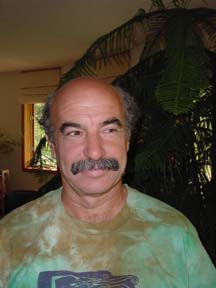May 4, 2007
I decided to check out Indian Cave State Park in Nebraska, located on bluff land overlooking the Missouri River. It was the goal of one of the day trips on Saturday, and I figured I could take a different trip that day. Went into Sabetha for a down home style breakfast, and then started following the GPS along back roads into the park, since I wanted to get into the loess bluff zone along the river. That worked really well, and I was having great luck with fence-line sparrows, including LeConte's, and found a colony of Bank Swallows right on the edge of the road. There had been enough rain that some of the roads were pretty muddy and slippery, but I always managed with the four-wheel. As I was approaching the park from the south on a road that seemed to go in, I got the dreaded dead end sign.
Let me say a few things about GPS and the maps that come with it. They are sometimes terribly wrong, not with main and secondary roads (but those do get realigned sometimes and it takes awhile for the changes to get into the database), but the little dirt roads can end up being gated farm roads, or something that just doesn't exist any more, and there's a level where the roads aren't coded very accurately for quality. So a good wide heavily graveled main county road looks exactly the same as an unimproved dirt track. Now in Arkansas, at least in the Ozarks, unimproved is still graveled, since the soil is half rock. Nebraska is a little different. Loess is windblown soil deposited by the great storms as the glaciers retreated, and a dirt road can be sixty feet deep to the first rock. Sixty feet of fine just-add-water gumbo.
At the dead end sign I did the logical thing, turned left on the graveled road, headed west, breasted the little hill by a farm yard and, before I could touch the brakes, was sliding down deep wet mud. Gravel ended. There were squirelly tire tracks slithering back and forth as the road descended and disappeared up a rise. I kicked in four wheel and tried to back up. Too steep too wet slide into ditched edge. Go forward get back in center, try backing again, same thing. Repeat. There are times when you need a tractor. So I left the truck comfortably against the bank, had no choice, and started walking back to the corner. At least it wasn't far.
There was a nice well kept farm house with bird feeders, and Harris's Sparrows among others. When I knocked a woman answered, and I explained my predicament. I was lucky she said, since she usually wasn't home at that time, being head nurse at the local hospital. Fallsville. And I was lucky that her husband was not far away, visiting his mom. She called, we talked, drank water and ate cookies, and he arrived after a short wait. I explained again, and he led me with a content and bemused look out to a really big tractor. He was wearing knee high rubber boots. Getting on was like climbing a ladder. I have to say that they were a couple out of the American dream, old style. The farm was huge, and given the dirt he had, rich and productive, also hell on tractors. We drove out the short distance, chained up the truck, and after I figured out what I was supposed to do (don't drive and let the machine do the work) he had me out in a couple of minutes. Deep relief, deep good luck all around. I offered money which he declined, made sure I knew how to get to the park on good roads, and drove back the way I'd been coming. I didn't make myself remember their names, no address, but I'm so grateful, and hope someday I can do something nice for them.
Eventually in a few miles I got into the park, Indian Cave. The quality of the place is indicated by the seventy species in about three hours, including the back road birding. It's a big park with lots of well maintained facilities. I found three different approaches to the river as well as good upland forest and meadow habitat. Passerine heaven too, lots of migrants. Five kinds of flycatchers, eight warblers, and eleven species of sparrows. I wasn't really trying, but ended up with more than a third of the Nebraska species, building on a list from a trip in 2001 and the Sandhill Crane trip earlier in '07.
I stopped in Fallsville at the library to get email on their Internet. It had become a hot and really muggy day, more rain building up, and it did rain that night back at the campground. I was back early enough to bird around there, meet the folks arriving, tell some stories, mostly my mud deal and generally mellow out after a great day. Last thing was a quick local trip for some owling and Whip-Chucking. Got them both, Whips and Chucks.

